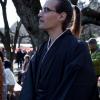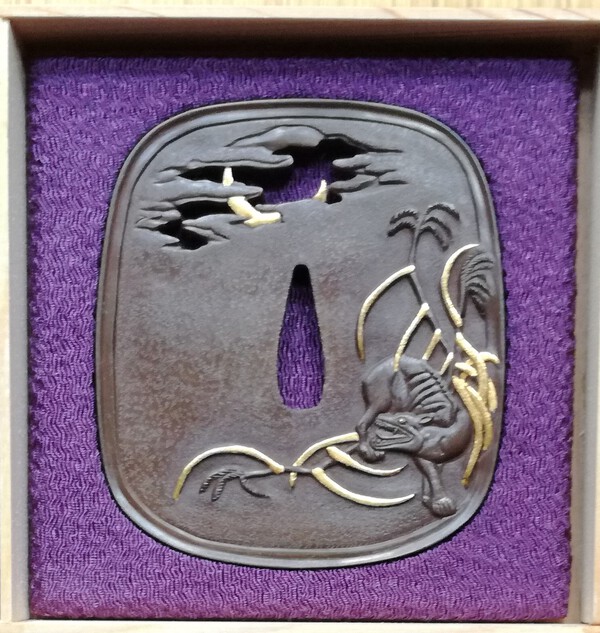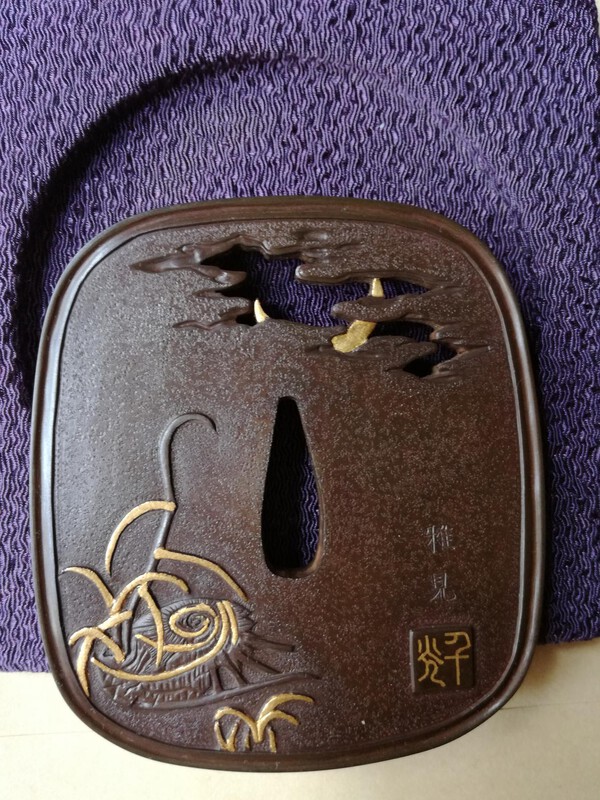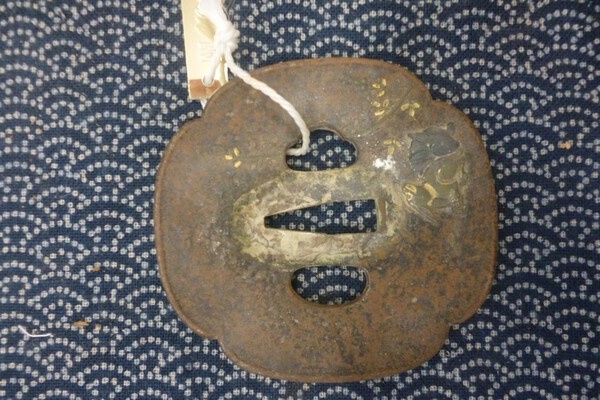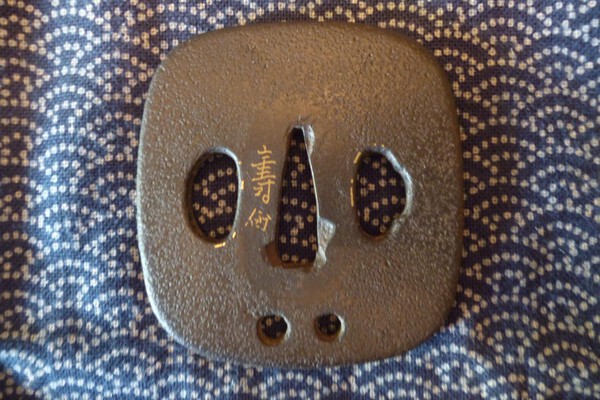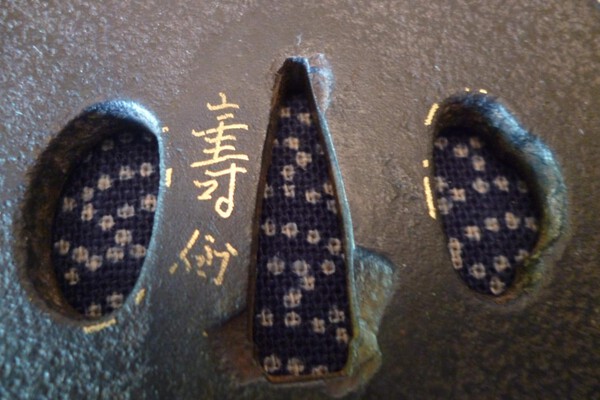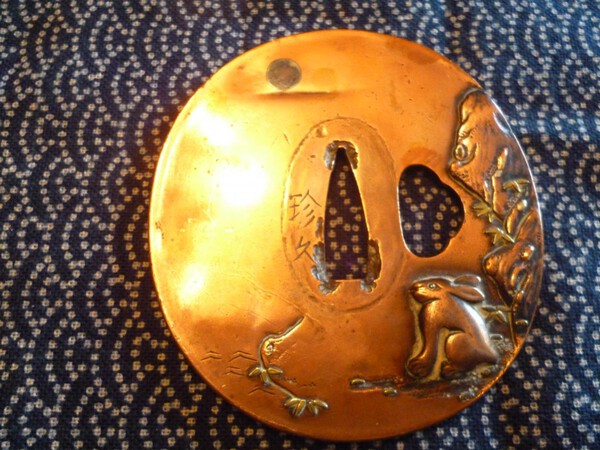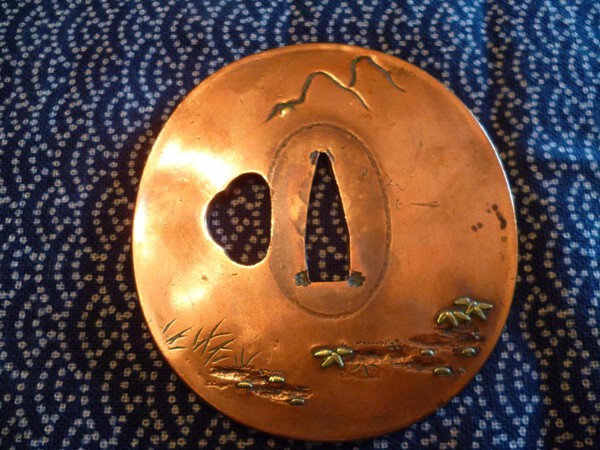-
Posts
133 -
Joined
-
Last visited
Content Type
Profiles
Forums
Events
Store
Downloads
Gallery
Everything posted by SalaMarcos
-
Dear fellows, Since one year I'm rewriting my PhD about tsuba to publish a book. In my doctoral thesis I couls use many images because was for an academical propouse, but now for a publish book I found a lack of images free of use. Because I know that many of you have a huge collection, I wanna ask you if you like to allow me use some of your tsuba pics to ilustrate my book. The book will be in Spanish, but of course I will give you a copy of the work, and if you with I can also quote/reference you on the book or put anonimous, as you wish. For this time I need some pics of: - Kagamishi /Kokyôshi tsuba. - Tachikanagushi tsuba - Bizen Shôami - Yamakichibei / Yamasaka Kichibei - Hôan - Hayashi - Kamiyoshi - Nishigaki Thanks in advance! Best regards from Spain, Marcos.
-
In the MET you've some similar work: https://www.metmuseum.org/art/collection/search/35205?searchField=All&sortBy=Relevance&ft=tsuba&offset=880&rpp=80&pos=945 https://www.metmuseum.org/art/collection/search/25727?searchField=All&sortBy=Relevance&ft=tsuba&offset=960&rpp=80&pos=965
-
Hi Tony, thanks for posting your tsuba, I was specially interested in the female tsubakô, we must study more about this and maybe someday Artemisa Gentileschi will apear on this field Regarding the topic of the wolf, the 18th generation of Edo-Itô school, Itô Masanori (Ôkawa Chikô - Tôhôsai Masami) told me that this motif is called Gekka Garo, and means a hungry wolf that is searching some food when suddenly the Moon apears behind the clouds, and then the wolf tries to bite it. Here I post the tsuba of this motif that Ôkawa san did with a tetsu plate and kin zôgan.
-
Hi there, here I post the lecture of Ōkawa Chikō, 18th generation Itō Masami of the Būshū Edo-Itō school of tsuba, during his event, exhibition of tsuba, demonstration of gin zōgan and nanako tagane in Spain. Soon I will post the entire report in English, by the time here's in Spanish. The lecture is also in Japanese and Spanish. Soon I will put English subtitles. https://youtu.be/DQh0nfivqnU https://cooljapan.es/memoria-del-evento-tsuba-guardianas-la-vida-arte-los-samurai/?fbclid=IwAR26ihHuGWrPjhbAcbroV0EVxRRoG8CNnGTcxzPOzHLjotikcmlClSXEf6Y
-
Seems Chôshû tsuba, late XVIII century I guess.
-
Thank you very much for this document!
-
I think that this are decorative motifs and not mei. I saw it also in kozuka.
-
Dear friends, I'm sorry to anounce that the Madrid event is full. In fact, it has a wainting list of 40 people. If you didn't reserved your spot via telephone, I'm sorry that you cannot attend. But there are still spots free at the Vitoria and Zaragoza events. Thank you for your interest. Best regards, Marcos Sala. Complutense University of Madrid.
-
Dear tsuba, kinkō and tōsōgu lovers, I have a important new for all of you. For the first time, a Japanese kinkō/ tsubakō will visit Europe for offering conference, exhibition and demonstration of some techniques such as sukashi, nanako tagane or zōgan, in a free and open event. The only problem is that he will only visit Spain, in fact, 3 different cities in Spain. Original plan was to visit more countries around Europe, but finally will be only in Spain. Despite this, I hope some of you, specially who lives nearby Spain, can attend some of this events. The kinkō / tsubakō that will visit us is Mr. Ōkawa Chikō Tōhōsai, 18th generation of the Bushū Edo-Itō school, as direct student of the 17th generation Itō Masayasu and the masters Hattori Nagamasa, and the National Treasure Umetani Yūmi. Mr. Ōkawa is a tsubakō with more than 40 years of experience, many of his tsuba was exhibited at Tōken Hakubutsukan and he won different awards of this and other institutions. At his 73 years old, Mr. Ōkawa keeps working every day on tsuba and tōsōgu at his small atelier in Kasukabe-Saitama. Mr. Ōkawa will bring some of his awarded works and some of the last ones for a small exhibition. Also, he will offer a conference about the Bushū Edo-Itō school. Mr. Ōkawa will bring his own tagane sets, and some plates for making a demonstration of sukashi, nanako tagane, zōgan, etc. The 3 cities, the places, days and hours are the following ones: 15 November 2019: Madrid. Museo Nacional de Artes Decorativas at 11h. Free entrance but with inscription on this telephone: 0034 910505755. 18 November 2019: Vitoria. Museo Armería de Álava at 19h. Free entrance till the conference room get full. 20 November 2019: Zaragoza. Museo de Zaragoza at 19h. Free entrance till the conference room get full. Despite Spain is a far country for many of you, I hope some could attend to any of this events and meet this great artist of kinkō tsuba. Best regards, Marcos Sala. PhD Art History - tōsōgu. Asia Research Group. Complutense University of Madrid.
-
Pd: Just today I found it in Kawaguchi's tsuba taikan, but just reference to Yanagawa Naoyuki, no image or further information. Do you know any other book maybe regarding Yanagawa school in particular?
-
Dear colleagues, how are you? I am writing this because I'm looking for images of Naoyuki's works in particular 直 之. Haynes, in his index, has a Naoyuki from the Yanagawa school belonging to the Katô 直 之 加藤 family, and another also from the Yanagawa school, from the Fuji family 直 之 富士. Finally, he quotes a 直 之 Naoyuki from the Kawaji family of Chôshû. However, I have not been able to find references in the books of Sesko, Kawaguchi, Shigeo ... and I have not been able to find images either. I hope you can help me. Thank you.
-
Yes, that was one of the sources and the other the Toso-kinko from Sesko. I think must be an old mistake, maybe from very old sources... Wada, Hara, Torigoye, who knows, but Masatsune history must be a lie for justify an honorable history about the founder of the school, or maybe the dates of Masatsune or Yanagawa Naomasa mus be wrong.
-
I also looked there but is not listed in the V1 and V2, we must wait for the 3...
-
As many of you noticed, I made my PhD about tsuba and tôsôgu in spanish collections. Checking my notes I found a terrible problem with Ishiguro school. I found in two diferent books the following history of the Ishiguro school: Ishiguro Masatsune was student of Yanagawa Naomasa (for a short time) and of Katô Naotsune. He took the name Masa from Naomasa and Tsune from Naotsune to make his own name Masatsune. But the problem I found is that Ishiguro Masatsune borned in 1760 and Yanagawa Naomasa died in 1757... so how could this possible? I posted here because is not a simple mistake, I found it in 2 diferent books from 2 diferent sources that can not be conected. I think this must be an old mistake, someone must mistaken by copying the dates of the born of Masatsune or dead of Naomasa. What do you think?
-
Thanks Ian!
-
Thanks my friend In this book , in this pages, is refered the Satsuma rebelion style equal as shônai style, that was because I asked about .BUCK, Thomas. The art of Tsukamaki. Lloyd & Tutle publishing limited. Poland, 2014. Pp. 80-83.
-
Recently I wrote about this, but now I'm asking myself about such a name of this typical thin tsukamaki done by Satchô samurai during Bakumatsu that's called shônai tsukamaki. Why shônai, when Shônai domain was in the North of Japan and was a domain on the side of Bakufu and not imperialist? Maybe because it was Shônai attacck against Satsuma residence in Edo who started the Boshin wars? What do you think about this name of the tsukamaki/koshirae?
-
I think is real, but not very old. I saw many tsuba like this mounted in XIX century swords with a shônai Satsuma koshirae.
-
I'm with John, the cross seems added many years later. It's sad, but I know some people even today that bougth Edo period tôsôgu and then fit with zôgan techniques some crisian crosses, virgin Mary medals, and so on... and they sell it as a kakure kirishitan tôsôgu... Not just private colectors but also museums are falling in this kinds of fraud. I was at the kakure kirishitan museum inside the Shimabara castle, and the few things related to crosses or christian motifs are very very well hidden. About works on the years of the "iberic century" with the permision of catholic religion, I saw also few examples of christian propaganda on tôsôgu. Just some myôchin tsuba, or some nanban tsuba with little crosses, but no more. Recently, I read some researchs about the tokei sukashi of Owari tsuba in relation with jesuitic anagram, that's is very intersting and kind possible, but when I saw corsses so clear like that, my opinion is about 99% added later, in the XX or XXI century. But about the Gotô original kôgai... good piece.. just shame about adding the cross.
-
-
Dear friends, I'm keep going on my PhD about tsuba in spanish colections and I found this one. I can't identify the mei or the tsubakô... the udenuki ana could sugest some artist from the South? Do you think that the kinzôgan mei could be made by the Umetada's? Thank you very much
-
THANKS, Grey, I will check this! Next it would be wonderful if Sesko made a crowdfunding translation
-
Hi Geraint, Thank you very much. Yes,I printed this all the texts on this website time ago But recently I founded some Edo-Itô tsuba, and also meet a tsubakô 11th generation Edo-Itô, and I wonder if there are any book from Joly, Wada or Fukushi that talks a bit of this school. All I founded is texts by Haynes-Torigoye. Very good indeed, but just asking if someone knows another work
-
hello from Spain, has anyone ideas about books or sources about the Edo-Itô school? Thaks a lot!
-
I saw in a spanish private collection this tsuba signed by Satō Yoshihisa - Chinkyū, of the late XVII century and early XVIII.... but... could be gimei? I don't know certanly.


